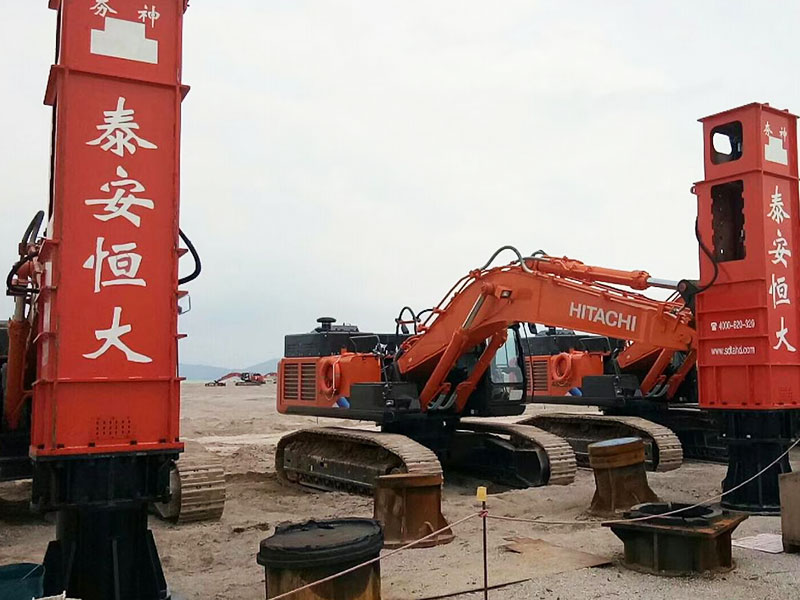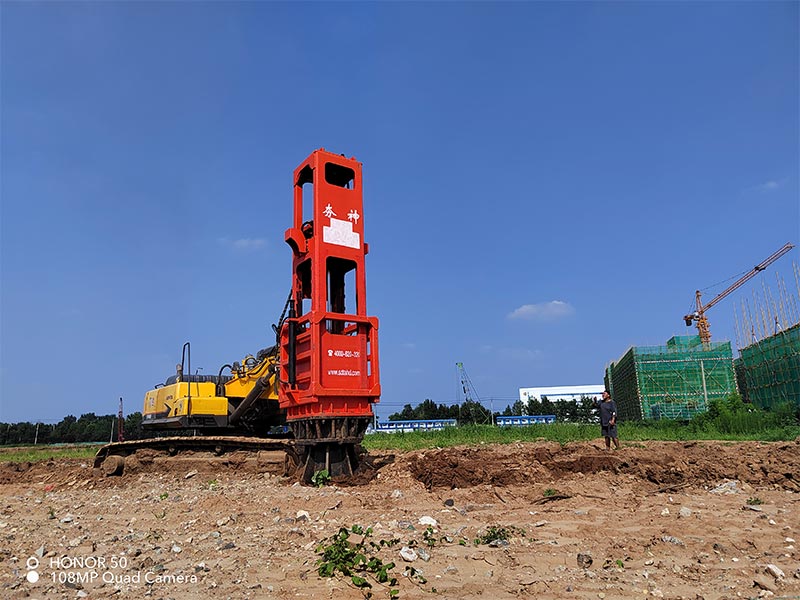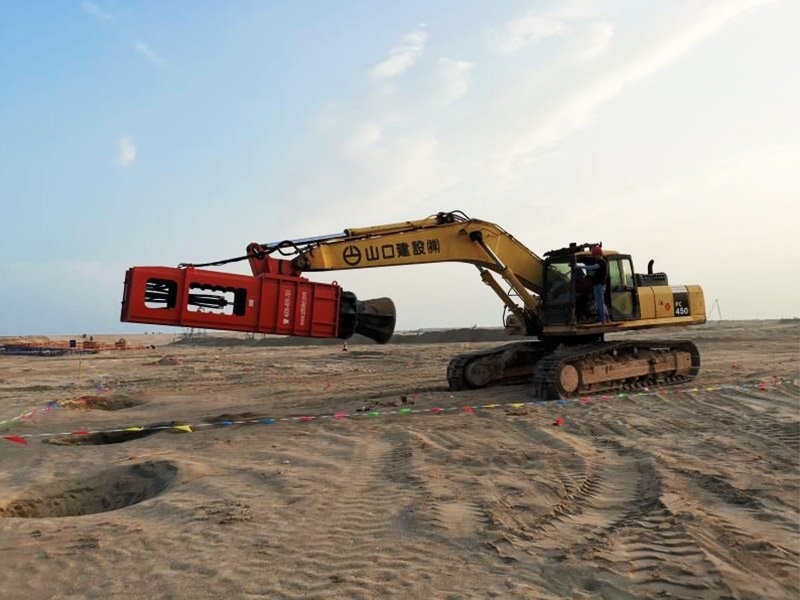What does it mean to have 95% compaction? HENGDA RIC
- Update time:2023-01-19 10:41:05
- Views:327
The energy and deflection of the soil is monitored and recorded at each location, which allows the geotechnical engineer to determine when effective treatment is complete. It also enables the engineer to identify weak zones (red dots) or debris zones throughout the pad so that any remedial actions that may be required can be minimized resulting in cost savings.

Control: the machine is accurately controlled from the excavator cab and the degree of compaction is electronically monitored,
Safety: the impact foot is in contact with the ground at all times and eliminates the risk of flying debris. Unlike conventional dynamic compaction, other activities can take place in close proximity,
Quality assurance: the impact energy and soil deflection are recorded by an on-board computer for presentation of compaction data to site managers. Results can verify work done to the client. The data can also highlight weak zones where extra fill is required, or zones where underground obstructions were present (eg. previously hidden old foundations),
Mobilisation: the RIC units are mounted on CAT 45 ton and CAT 85 ton excavators and can be mobilised within minutes of arrival on site,
Speed & cost: due to the fast ground coverage and the compaction efficiency, RIC generates a significant cost and time saving over conventional dynamic compaction methods with up to 75% cost and 100% time savings.

The Rapid Impact Compaction for the soil improvement uses a hydraulic hammer mounted on an excavator. The hammer with a weight ranging from 5 up to 12 tons is dropped freely from a height of 1.2 m on a large circular foot. Impacts repeated at a rate ranging from 40 up to 60 blows per minute plunge the steel foot creating a crater.
The control system installed in the operator’s cab allows for controlling the compaction process and recording the parameters such as impact energy or foot penetration. It can also be used to change the height from which the hammer is dropped.
The compaction in the RIC technology is usually preceded by creating a test plot where the compaction is performed for various spacing and rates of blows. Then, the local compaction of the improved soil is tested and the optimal grid spacing and the number of blows per one point is determined. Depending on the soils, the number of blows varies between 10 and 40 per one point.

The Rapid Impact Compaction technology works very well for all kinds of non-cohesive soils, especially for the compaction of gravels and sands. It can also be used on reclaimed areas where anthropogenic soils and uncompacted fills occur.
Most often, the RIC technology is used for the construction of enclosed buildings: under the foundation slabs/floors of industrial and commercial halls and under heavy surfaces of warehouses, tanks; for the construction of infrastructure: all types of roads and highways, under the road and rail embankments and often as the improvement of the base for parking lots and airport runways. A great advantage of the RIC method is its mobility and relatively small size of the equipment unit which allows for carrying out the works in areas with difficult access.

RIC technique is performed at the surface of a terrain and it comprises of a heavy excavator which is equipped with a specially designed arm onto which the hammer is attached. Within the hammer, a 5 to 10 drop weight is hydraulically lifted till a required height after which the weight is dropped using a hydraulic acceleration. This whole process of lifting and dropping of the weight takes place with a frequency of 30 to 80 times a minute.

During the compaction of a location, the foot remains into contact with the soil. The impact of the hammer on to the foot initiates the compaction process. The movement of the foot into the ground, the heavy weight of the equipment and high energy transfer is also causing densification. The dense compaction grid ensures that a homogeneous compaction is reached throughout the area. This is caused because the impact locations are also affected by the compaction of nearby points which results in improving the overall performance.
- 2022-11-02Does rapid impact compactors treat subgrade? What are the hazards of subgrade settlement?
- 2023-01-28Do you wet crushed rock before compacting? - HENGDA RIC
- 2023-02-14How deep does a rapid impact compactor? - HENGDA RIC
- 2023-02-09RIC compaction machine for sale - HENGDA Rapid impact compaction
- 2023-02-14How deep is rapid impact compaction? - HENGDA RIC
- 2023-01-29What does it mean to have 95% compaction? - HENGDA RIC
- 2023-01-28How do I know if my soil is compacted enough? - HENGDA RIC
- 2022-08-15What is the appropriate depth of rapid impact compaction?
- 2022-12-02what is "rapid" about rapid impact compaction? HENGDA
- 2022-08-15Rapid impact compaction construction process - Rapid impact compaction brand
- 2022-08-15Rapid impact compactor under construction at Xiamen Airport in China
- 2022-08-15Rapid impact compaction (ric) method commonly used for
- 2022-08-15What is rapid impact compaction method? - Rapid impact compaction manufacturer
- 2022-09-28Rapid impact compaction under construction at Dubai Airport in UAE
- 2022-08-15Rapid impact compactor at the construction site of Jazan Airport in Saudi Arabia
- 2022-08-15What is Rapid Hydraulic Compactor? - Rapid Hydraulic Compactor China Supplier
- 2022-08-15Rapid impact compaction in China's Guangdong high-speed construction
- 2022-08-15HC36 Rapid Impact Compaction Equipment in Jiangxi Highway Construction in China
-
Construction Technology of HC36 Rapid Impact Compaction in Gansu, China
Construction points of rapid impact compaction machine in Ga...
-
Rapid Impact Compaction Operation Video Daquan-Rapid Impact Compactor Operation Video Tutorial
Rapid impact compaction has remarkable effect in foundation ...
-
Rapid Impact Compaction equipment manufacturer-Rapid Impact Compaction debugging equipment
Rapid impact compactors have two compaction forms in practic...
- Hengda Machinery Co., Ltd
How much is the price of rapid impact compaction, model parameters, etc.


